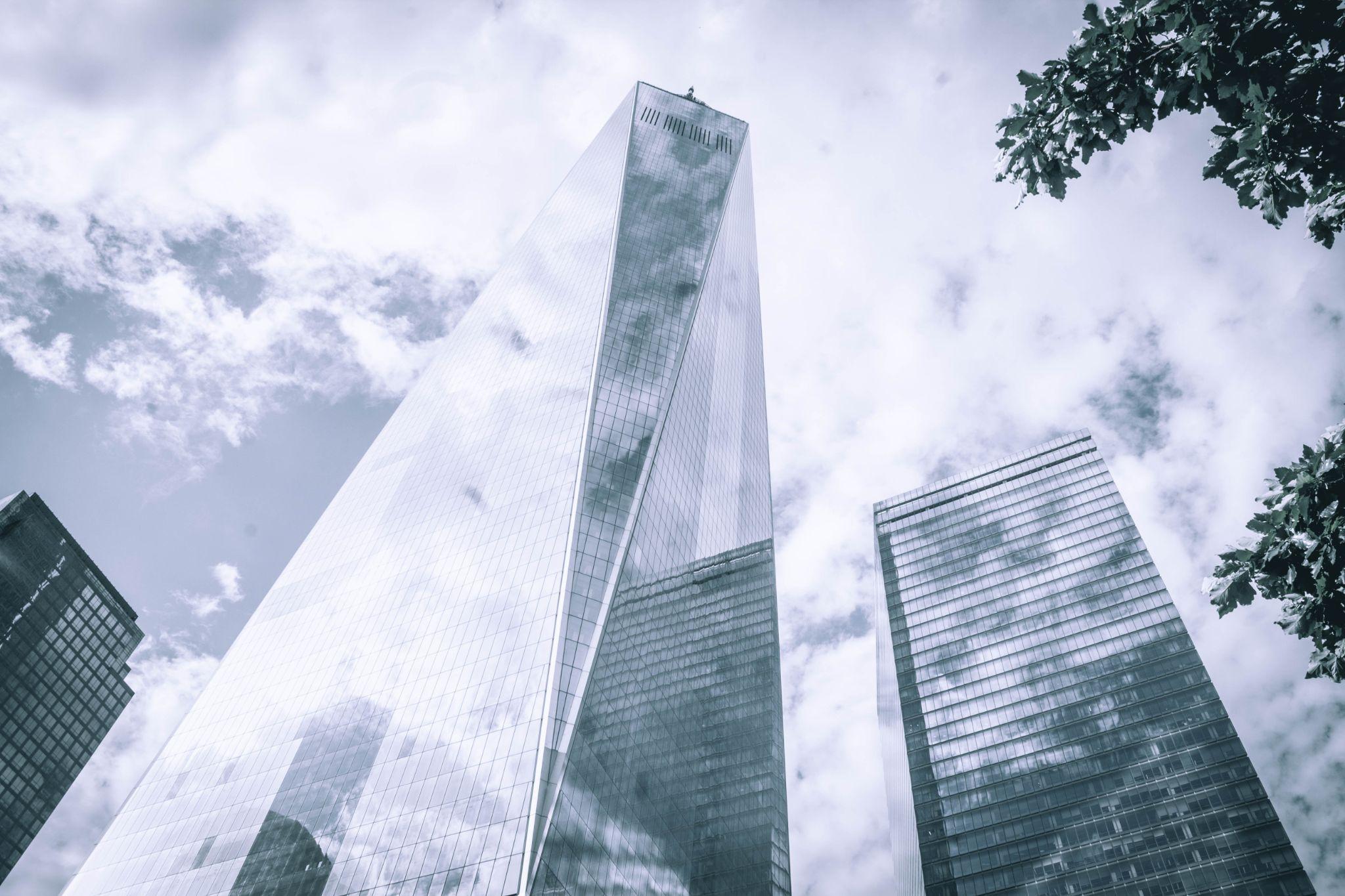Author | Lucía Burbano
One World Trade Center is not only the tallest building in New York or the fourth tallest in the world. Its importance lies in its emotional value. The tower, design by David Childs from SOM, is located on the site previously occupied by the Twin Towers, destroyed in the terrorist attack of September 11, 2001. A skyscraper that heals wounds and looks to the future.
One World Trade Center, much more than a skyscraper

The One World Trade Center project came about soon after the attack that shocked the world. In 2002, the authorities decided that the Twin Towers would be replaced by office buildings, a museum, a monument in memory of the victims and a park. The space was named ‘Ground Zero’.
The Lower Manhattan Development Corporation announced the competition to develop the project, which was won by the architect Daniel Libeskind with a proposal for a symmetrical tower evoking the Statue of Liberty. It had the same height as the original World Trade Center, crowned with a spire that took the skyscraper height to 541 meters or 1,776 feet, as a reference to the year the United States gained independence. The Governor of New York at the time, George Pataki, christened the design as Freedom Tower.
However, there were numerous co-owners with the right to speak and vote, including the Port Authority of New York and New Jersey and Larry Silverstein, owner of the Twin Towers. In 2004, the latter preferred the proposal submitted by David Childs, the architect from Skidmore Owings Merrill (SOM), the firm behind projects including the Willis Tower or the Burj Khalifa.
A tower that looks to the future

Given the challenge of taking on such a symbolic project, Childs designed a polyhedral skyscraper to represent the future and hope, but with simplicity and elegance.
As the tower rises on its cubic base, the square edges are chamfered back, transforming the building’s shape into an elongated square antiprism with eight tall isosceles triangles. Near its middle, the tower forms a perfect octagon, culminating in a glass parapet whose shape is a square oriented 45 degrees from the base. The building’s overall effect is that of a crystalline form that captures an ever-evolving display of refracted light, as if it were a kaleidoscope.
Glass canopies and large cable-net walls framed by metal portals define the entrances, which provide for separate access to the observatory lobby on the concourse level, transportation systems, and commercial office space in different sections of the building.
These transparent entrances encourage building occupants to flow out into the surrounding plazas, designed as open and green areas for people to gather and relax, and allows access to the memorial honoring the victims of the terrorist attack.
The New York Police Department requested a windowless, solid concrete base to protect the building from truck bombs and other possible attacks.
The 71 floors of offices sit on the base. On top of these is a three-story observation deck.
A decade under construction

Although the first brick was laid in 2004, construction work did not begin until 2006. In April 2012, the One World Trade Center became the tallest structure in New York when it exceeded the height of the Empire State Building (381 m).
It took eight years to complete the building in 2014 as a result of numerous financial, safety and design disputes. Its location, on the intersection between multiple subway and rail lines, in a densely populated area of Lower Manhattan, hindered the construction work. Its proximity to key Institutions such as the city council, the New York City Police Department and the federal courts also led to reviews in the design of the perimeter safety.
Changes to the One World Trade Center design
2003: A mix between Libeskind’s and Childs’ designs
Both architects worked together for nearly a year. The result was a design that maintained Libeskind’s symbolism but with a series of changes on the upper floors, where they proposed installing wind turbines. Childs believed that twisting the tower would help channel wind upward to generate power.
Cables, suggesting the supports on the Brooklyn Bridge, would wrap around the exposed upper floors.
2005: Childs’s design reigns
With Libeskind out of the game, David Childs produced a new design that evoked the elegance and symmetry of classic skyscrapers. The result of his proposal was very similar to the existing building. These changes included a cubic base instead of the parallelogram and the wind turbines disappeared to install the mechanical equipment in the base of the building.
Exceeding sustainability standards

The One World Trade Center was also a pioneer in the use of new technologies to maximize efficiency, minimize waste and pollution and reduce the environmental impact.
The building’s sustainable design strategies exceed the criteria established for the LEED Gold certification. The tower features a high-tech building management system that optimizes energy use and indoor air quality based on data collected by thousands of sensors.
The building also generates some of its own power through elevators with variable voltage/variable frequency drives and hoist motors that produce energy through regenerative braking like hybrid vehicles. Under certain conditions, the elevator motors turn into small generators supplementing power in the building’s power distribution grid, thus reducing demand for electrical power.
In addition, over 40 percent of the materials used in the construction of the tower were made from recycled materials. The structural steel was produced from 95% recycled materials, and the building features "green concrete," made from waste fly ash collected from coal plants.
Thirty-four percent of construction materials were extracted, harvested, or recovered as well as manufactured within 800 km of the project site, further reducing the project’s carbon footprint.
Photographs | Unsplash/Ubay Seid, Wikimedia, Unsplash/ Lucas Franco, Andreas Kruck, Antonio DiCaterina






















































